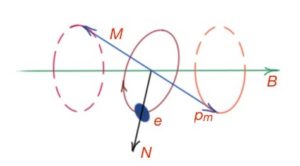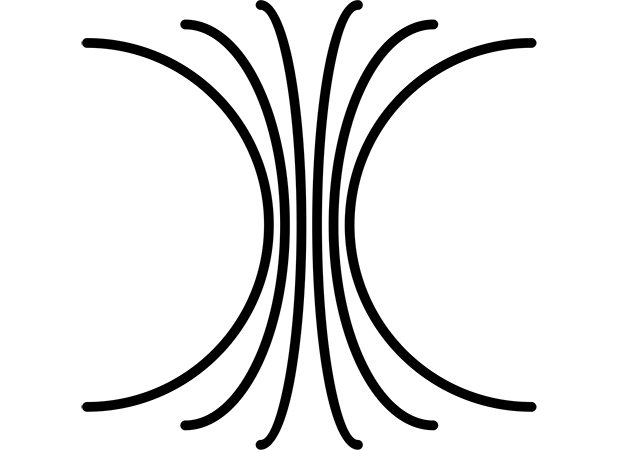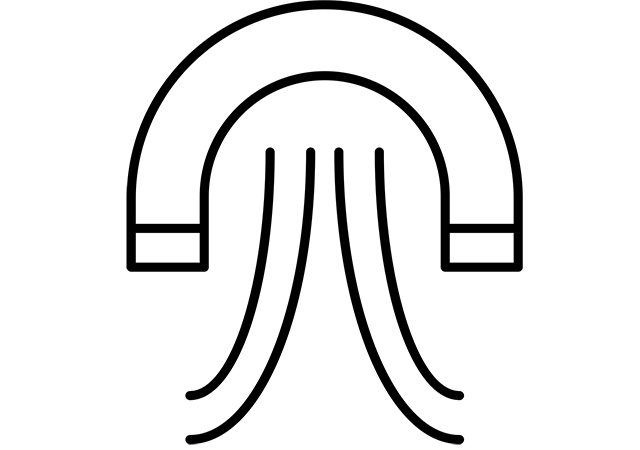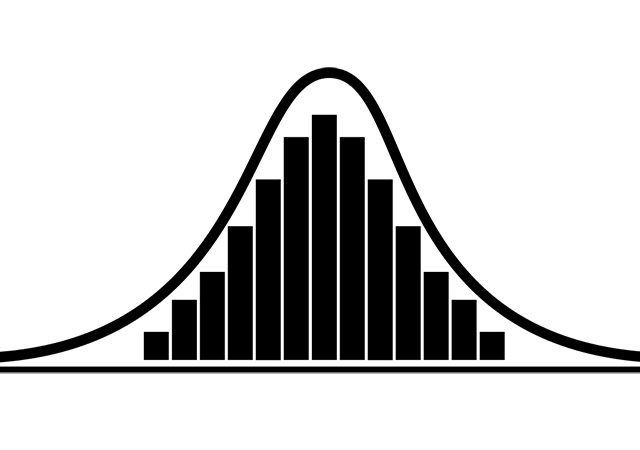Depending on the value of magnetic permittivity, magnetic substances are divided by the diamagnetics, paramagnetics and ferromagnetics. The first two classes are weak magnetics.

Diamagnetics, like Au, Pb and Cu are characterised by µ < 1. This means that the magnetic field of micro-currents B’ is in the opposite direction to the B0. Diamagnetic effects are visible in strong magnetic fields, for example, they can be drawn out from the magnetic field with bigger intensity. The total magnetic moments of these substances, when an external magnetic field is 0, are 0. External magnetic fields cause the precession of orbital magnetic moments of the electrons in the atoms with some certain angular velocity. (Figure 36-18.3). This precession is equivalent to the occurrence of additional movement of the electron, that is causing an additional induced magnetic moment Pmi in the opposite direction to the B0 field. This induced magnetism is a characteristic of any substance.
Paramagnetics, like Al,Pt,FeCI3 have magnetic moments that are different from 0, when the external magnetic field is 0. The spinning of these magnetic moments of the electrons in these atoms is not compensated, because there are some non-combined electrons. Magnetic moments of some atoms Pmi in in these substances are disordered, however
In the external magnetic field there is some primary direction of the atomic magnet moments that occur, and the resulting magnetic field is
bigger than B0. Thermal movement of atoms hinders the total streamlining of the atomic magnetic moments. The temperature magnetising dependence is the following:
Micro-magnetic fields in the paramagnetic B’ is in the same direction as the primary field B0, so the result is that field B is bigger than B0. Paramagnetics are drawing into the magnetic field with bigger intensity. If a spin magnetising mechanism exists in the magnetic field, it usually prevails over all the other magnetising mechanisms. Ferromagnetics, like Fe, Ni, Co and others are characterised by a very strong ability to magnetise, 1010 times bigger than diamagnetics and paramagnetics. Magnetic permittivity for these materials are much bigger. The Einstein-de Haas experiment g-factor for ferromagnetics means that the magnetising moment of ferromagnetics has a spin nature. The reason why the spin mechanism is prevailing, is the display of the domain structure of ferromagnetics.
Quantum mechanics explains this magnetising mechanism. Ferromagnetics differ from paramagnetics and diamagnetics not only with quantitative characteristics, but also because they are characterised by hysteresis phenomena. Magnetic fields in ferromagnetics increase non-linearly, reaching saturation. When the external magnetic field decreases, the magnetic field in ferromagnetics decreases more slowly. When the external magnetic field is 0, the field in ferromagnetics is not 0, and is characterised by residual magnetising. During reversal magnetisation, there is a domain realignment that occurs in the ferromagnetic. This process is accompanied by mechanical stresses in the magnetic material, and leads to the Barkhausen noise.




